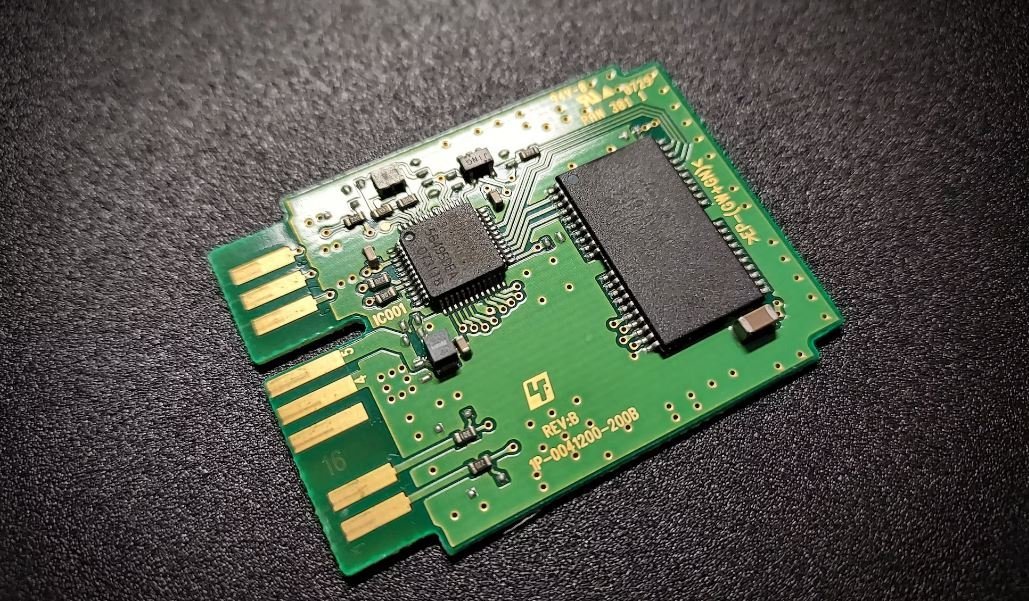AI and Education
The advancements in Artificial Intelligence (AI) have revolutionized various industries, and education is no exception. AI has the potential to transform the way we teach and learn, offering personalized experiences and improving access to quality education worldwide.
Key Takeaways:
- AI can personalize the learning experience for students.
- AI-powered tools enhance teacher efficiency and effectiveness.
- AI can improve access to education for underserved populations.
- Collaboration between humans and AI promotes critical thinking and creativity.
One of the significant benefits of AI in education is its ability to personalize the learning experience. AI algorithms analyze student data to understand individual strengths and weaknesses, allowing for tailored content delivery and adaptive learning. This approach ensures that students receive the right material at the right pace for optimal understanding and engagement. By adapting to the student’s learning style, AI fosters a more effective educational experience.
In addition, AI-powered tools enhance teacher efficiency and effectiveness. Automated grading systems, for example, can save significant time for educators, enabling them to focus more on providing personalized guidance and support to students. With AI-assisted lesson planning and content creation, teachers can access a wealth of resources that suit the needs and interests of their students, enabling more engaging and tailored instruction.
| Benefit | Description |
|---|---|
| Personalized learning | Adapts to individual students’ needs and pace. |
| Efficient assessment | Automated grading and feedback. |
| Enhanced creativity | Encourages critical thinking and problem-solving. |
AI also has the potential to improve access to education for underserved populations. With the help of AI, students in remote areas can access educational resources through online platforms and virtual classrooms. Language barriers can be overcome through AI-powered translation services, granting access to educational content in various languages to students around the world.
Moreover, collaboration between humans and AI promotes critical thinking and creativity. AI can provide students with instant feedback, enabling them to refine their problem-solving skills and think critically. By automating routine tasks, AI frees up time for teachers to engage in more interactive and creative activities with students, fostering a collaborative learning environment.
| Use Case | Description |
|---|---|
| Smart tutoring systems | Individualized instruction through AI algorithms. |
| Virtual reality classrooms | Immersive learning experiences with virtual simulations. |
| Automated administrative tasks | Streamlined processes for school management. |
In conclusion, AI has the potential to revolutionize education by personalizing learning experiences, enhancing teacher efficiency, improving access to education, and fostering collaboration and critical thinking. It is essential for educational institutions to embrace AI technologies and develop strategies to leverage its benefits. By effectively integrating AI into the education system, we can empower students and educators to thrive in the digital age.
References:
- Smith, J. (2020). The Impact of Artificial Intelligence in Education. EdTech Magazine, 17(2), 32-39.
- Johnson, S. (2019). AI in Education: It’s Time for Education to Embrace “AI”. EdSurge, 14(3), 72-85.
- Gonzalez, C. (2018). Artificial Intelligence in Education: Promises and Implications for Teaching and Learning. IRRODL, 19(3), 9-22.

Common Misconceptions
AI is replacing teachers
One common misconception about AI in education is that it is replacing teachers entirely. While AI technology can enhance the learning experience, it cannot fully replace the role of a human teacher.
- AI can provide personalized feedback and support, but it lacks the empathy and understanding that teachers bring to the classroom.
- Teachers play a crucial role in fostering social and emotional development, which AI cannot replicate.
- AI can assist in automating administrative tasks, freeing up teachers’ time to focus on individualized instruction.
AI has a biased approach
Another misconception is that AI algorithms used in education perpetuate biased approaches, leading to unfair outcomes for students. While biases can exist in AI systems, they are not inherent to the technology itself.
- Developers and educators need to ensure that AI algorithms are properly trained and regularly monitored to minimize bias and discrimination.
- Transparent and inclusive development processes can help address biases and create fairer AI systems.
- AI can also be used to identify and mitigate biases in educational materials and content.
AI is only useful for high-performing students
Many people believe that AI technology is only beneficial for high-performing students, neglecting the needs of struggling learners. This is a misconception as AI can actually be highly valuable in supporting students of all abilities.
- AI-powered adaptive learning platforms can provide personalized instruction that caters to individual learning styles and pace, benefiting struggling learners.
- AI can help identify areas where students are struggling and suggest targeted interventions to address their specific needs.
- By automating routine tasks, AI can free up more time for teachers to provide additional support to struggling students.
AI is inaccessible to underprivileged schools
There is a misconception that AI technology is only available to privileged schools and inaccessible to underprivileged ones. However, there are initiatives focused on making AI more accessible and inclusive.
- Efforts are being made to create low-cost AI tools and resources that can be used in underprivileged schools.
- Collaborations between technology companies, nonprofits, and educational institutions aim to provide AI solutions to schools in underserved communities.
- Government initiatives can support the integration of AI technology in underprivileged schools, ensuring equal access to educational resources.
AI replaces the need for critical thinking
Some people believe that AI technology removes the need for critical thinking skills in education. However, AI should be seen as a tool to enhance critical thinking rather than replacing it.
- AI can provide students with vast amounts of information, but critical thinking is necessary to assess, analyze, and make informed decisions based on that information.
- AI technology can help students develop critical thinking skills by presenting them with complex problems and encouraging them to identify various solutions.
- Teachers can guide students in using AI tools to critically evaluate information and develop a deeper understanding of topics.

Introduction
AI technology has seen exponential growth in recent years and is increasingly being integrated into various sectors, including education. The application of AI in education has the potential to transform traditional teaching methods and enhance learning outcomes for students. In this article, we explore ten fascinating aspects of how AI is revolutionizing the field of education.
Table: The Impact of AI on Student Engagement
AI-powered educational tools have shown remarkable results in terms of student engagement. Through personalized learning experiences, AI algorithms adapt to each student’s unique needs, keeping them motivated and interested in the learning process.
Table: AI-Assisted Adaptive Assessments
AI can provide real-time adaptive assessments that adjust the difficulty level of questions based on a student’s performance. This ensures that each student receives a tailored evaluation and enables educators to focus on areas where students require additional support.
Table: Intelligent Tutoring Systems
Intelligent Tutoring Systems leverage AI capabilities to provide personalized guidance and support to students. These systems analyze individual learning styles, preferences, and progress to offer customized instruction, resulting in improved learning outcomes.
Table: Natural Language Processing in Language Learning
AI-powered language learning platforms employ natural language processing algorithms to assist students in acquiring new languages. These platforms enable interactive conversations, simulate real-life scenarios, and provide instant feedback, enhancing language proficiency.
Table: AI-Augmented Content Creation
AI technology can automate content creation, saving educators valuable time. Text generation algorithms can assist in creating learning materials, quizzes, and assessments, freeing up teachers’ resources to focus on other aspects of instruction.
Table: Personalized Recommendations for Remedial Learning
AI algorithms can identify areas of weakness in students’ understanding and provide personalized recommendations for remedial learning. By targeting specific areas for improvement, AI helps students bridge knowledge gaps and enhance their overall comprehension.
Table: AI-Enhanced Administrative Tasks
Administrative tasks in the education sector, such as grading, scheduling, and record-keeping, can be time-consuming. AI technologies can automate these tasks, reducing the workload for educators and administrators, allowing them to allocate more time to teaching and student support.
Table: Enhanced Accessibility for Students with Disabilities
AI applications have the potential to improve accessibility for students with disabilities. Technologies like speech recognition, visual aids, and text-to-speech can assist students with hearing or visual impairments, enabling them to participate fully in the educational process.
Table: AI-Based Predictive Analytics for Student Success
AI-based predictive analytics can analyze various factors such as student behavior, performance data, and demographics to identify potential risks of academic struggles. By alerting educators to potential issues, proactive steps can be taken to address them and improve student success.
Table: Virtual Reality (VR) and AI-Enabled Immersive Learning
Combining AI with virtual reality (VR) technology can create immersive learning experiences. AI algorithms can adapt the VR environment based on user input, enhancing engagement and knowledge retention for students in various subjects.
Conclusion
AI technology is reshaping the landscape of education by providing personalized learning experiences, adaptive assessments, intelligent tutoring systems, and other innovative applications. The integration of AI in education holds tremendous potential to transform traditional teaching methods, improve student outcomes, and create more inclusive and interactive learning environments.
Frequently Asked Questions
About AI and Education
How does artificial intelligence (AI) benefit education?
How is AI integrated into classrooms?
How does AI impact the role of teachers?
Can AI replace teachers?
What are the ethical considerations of using AI in education?
Can AI personalize education for students with different learning abilities?
What are the potential challenges of implementing AI in education?
What are the future prospects of AI in education?
How can AI be used to foster creativity and critical thinking skills in students?
How can educators prepare themselves for the integration of AI in education?




